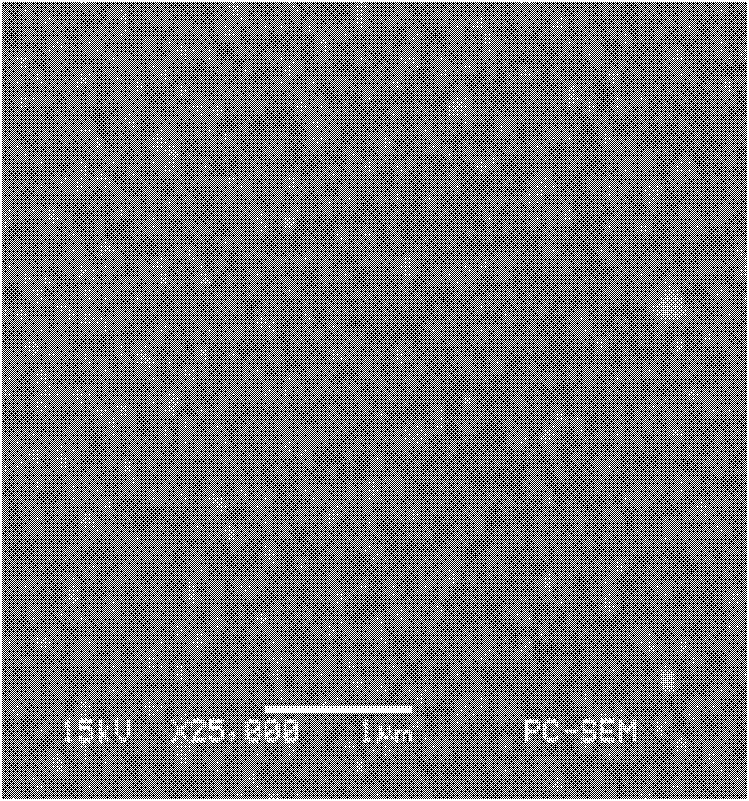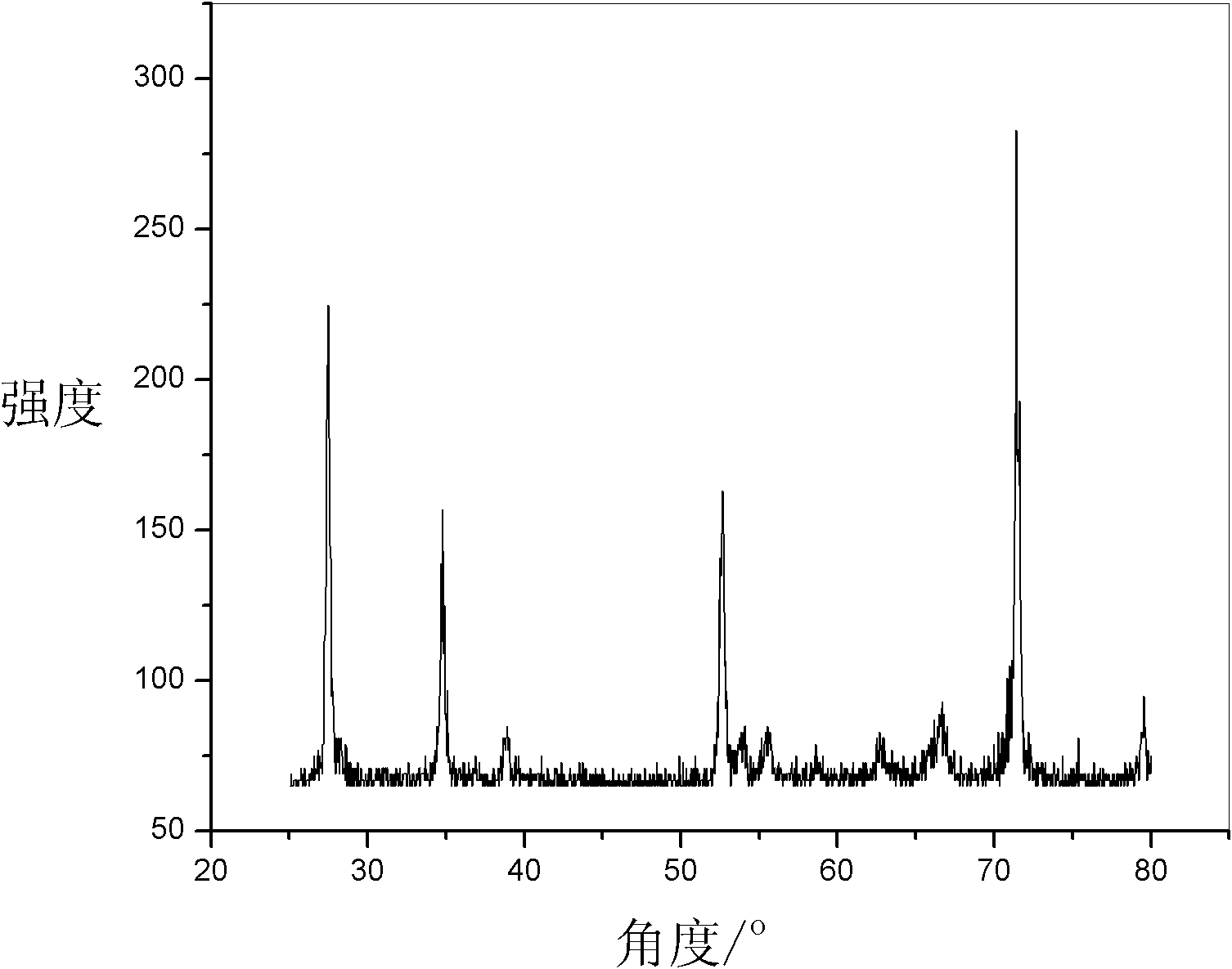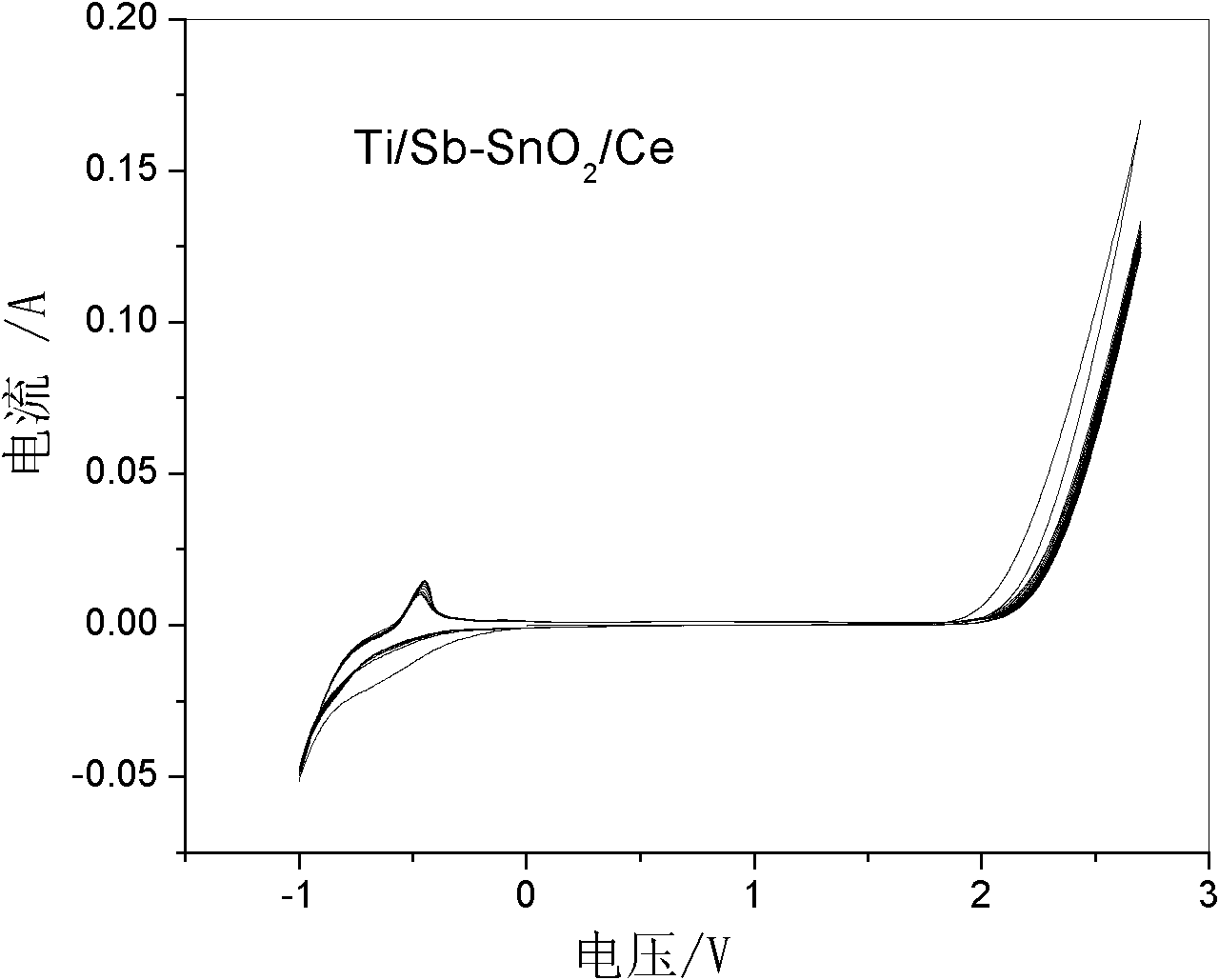Method for electrolyzing orange G by adopting cerium-doped tin antimony oxide coated titanium electrode
An oxide coating and electrolytic treatment technology, applied in the field of electrochemistry and environmental chemistry, can solve the problems of unsatisfactory removal rate and current density, difficult industrial application, high degradation efficiency, etc., and achieve electrolysis equipment and its operation is simple and the time is short , The effect of simple production process
- Summary
- Abstract
- Description
- Claims
- Application Information
AI Technical Summary
Problems solved by technology
Method used
Image
Examples
Embodiment 1
[0039] A method for electrolytically treating orange G with a cerium-doped tin antimony oxide coated titanium electrode comprises the following steps:
[0040] (1) Preparation of cerium-doped tin antimony oxide coated titanium electrode
[0041] ①Preparation of coating solution: at 60°C, first react ethylene glycol with citric acid to obtain an alcohol solution of ethylene glycol citrate, and then add SnCl 4 ·5H 2 O: SbCl 3 : Ce[Ce(NO 3 ) 3 ·6H 2 O] is 100:10:1 (molar ratio), controls ethylene glycol, citric acid, chloride to be 14:3:1 (molar ratio), stirs and heats up to 90 DEG C, constant temperature 30min, obtains coating solution;
[0042] ②Pretreatment of titanium substrate: polish the titanium sheet with sandpaper, rinse it with water, heat it to boiling in 5% NaOH solution for 1h, rinse it with deionized water, and immerse it in HF:HNO 3 :H 2After 1 min in O=1:4:5 (volume ratio), take out and heat to boiling with 10% (mass fraction) oxalic acid solution for 2 hou...
Embodiment 2
[0047] A method for electrolytically treating orange G with a cerium-doped tin antimony oxide coated titanium electrode comprises the following steps:
[0048] (1) Preparation of cerium-doped tin antimony oxide coated titanium electrode
[0049] ①Preparation of coating solution: At 100°C, first react ethylene glycol with citric acid to obtain an alcohol solution of ethylene glycol citrate, and then add SnCl 4 ·5H 2 O: SbCl 3 : Ce[Ce(NO 3 ) 3 ·6H 2 O] is 80: 12: 0.8 (molar ratio), control ethylene glycol, citric acid, and chloride to 12: 3.6: 0.8 (molar ratio), stir and heat up to 80 ° C, keep the temperature for 20 minutes, and the coating solution is obtained;
[0050] ② Pretreatment of titanium substrate: polish the titanium sheet with sandpaper, rinse it with water, heat it to boiling in 10% NaOH solution for 1 hour, rinse it with deionized water, and immerse it in HF:HNO 3 :H 2 After 1 min in O=0.8:4.8:4.0 (volume ratio), take out and heat to boiling with 10% (mass ...
Embodiment 3
[0055] A method for electrolytically treating orange G with a cerium-doped tin antimony oxide coated titanium electrode comprises the following steps:
[0056] (1) Preparation of cerium-doped tin antimony oxide coated titanium electrode
[0057] ①Preparation of coating solution: at 80°C, first react ethylene glycol with citric acid to obtain an alcohol solution of ethylene glycol citrate, and then add SnCl 4 ·5H 2 O: SbCl 3 : Ce[Ce(NO 3 ) 3 ·6H 2 O] is 120:8:1 (molar ratio), controls ethylene glycol, citric acid, chloride to be 16:3:1.2 (molar ratio), stirs and heats up to 100 DEG C, constant temperature 40min, obtains coating solution;
[0058] ②Pretreatment of titanium substrate: polish the titanium sheet with sandpaper, rinse it with water, heat it to boiling in 20% NaOH solution for 2 hours, rinse it with deionized water, and immerse it in HF:HNO 3 :H 2 After 4 minutes in O=1.2:4:6 (volume ratio), take out and heat to boiling with 10% (mass fraction) oxalic acid sol...
PUM
 Login to View More
Login to View More Abstract
Description
Claims
Application Information
 Login to View More
Login to View More - R&D
- Intellectual Property
- Life Sciences
- Materials
- Tech Scout
- Unparalleled Data Quality
- Higher Quality Content
- 60% Fewer Hallucinations
Browse by: Latest US Patents, China's latest patents, Technical Efficacy Thesaurus, Application Domain, Technology Topic, Popular Technical Reports.
© 2025 PatSnap. All rights reserved.Legal|Privacy policy|Modern Slavery Act Transparency Statement|Sitemap|About US| Contact US: help@patsnap.com



